Le marché mondial des portiques devrait atteindre 707.59 millions USD d'ici 2030, porté par les secteurs de l'industrie et de la construction. Cet article examine les facteurs clés que les acheteurs professionnels doivent prendre en compte lors de la sélection d'un portique, offrant des informations et une assistance précieuses aux acheteurs professionnels. En passant au contenu principal, les lecteurs trouveront une analyse approfondie et des directives essentielles pour prendre des décisions d'achat éclairées.
Sommaire :
– Aperçu du marché des grues à portique
– Analyse approfondie et dynamique du marché
– Facteurs clés lors de la sélection des grues à portique
– Progrès technologiques dans les ponts roulants
– Normes et certifications de sécurité
– Applications innovantes des ponts roulants
- Dernières pensées
Aperçu du marché des grues à portique
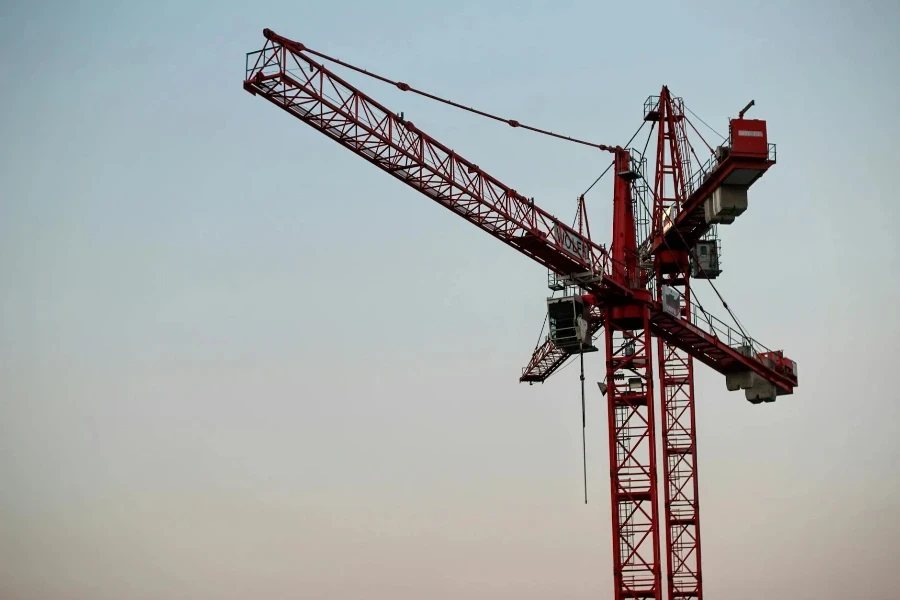
Le marché mondial des portiques connaît une croissance constante et devrait poursuivre cette tendance. La valeur du marché était d'environ 499.34 millions USD en 2024 et devrait atteindre 707.59 millions USD d'ici 2030, avec un taux de croissance annuel composé (TCAC) de 5.8 %. Cette croissance est alimentée par une demande croissante dans divers secteurs industriels et de la construction où les portiques sont essentiels pour la manutention efficace de matériaux lourds.
Le marché est divisé en segments en fonction de la capacité de levage, de la technologie et du type. Le segment de la capacité de levage comprend les grues d'une capacité comprise entre 0 et 40 tonnes et celles supérieures à 40.1 tonnes. Les progrès technologiques ont conduit au développement de grues à portique autonomes et manuelles, tandis que les types comprennent des grues en porte-à-faux et sans porte-à-faux. Une croissance significative est attendue dans des régions telles que l'Asie-Pacifique en raison de l'industrialisation rapide et du développement des infrastructures.
Les principaux acteurs du marché sont Konecranes PLC, Liebherr-International AG et Sumitomo Heavy Industries. Ces entreprises se concentrent sur les innovations et les partenariats stratégiques pour renforcer leur présence sur le marché. Le paysage concurrentiel exige une innovation continue, notamment dans les domaines de l'automatisation et de l'efficacité énergétique, pour répondre aux demandes changeantes du marché.
Analyse approfondie et dynamique du marché
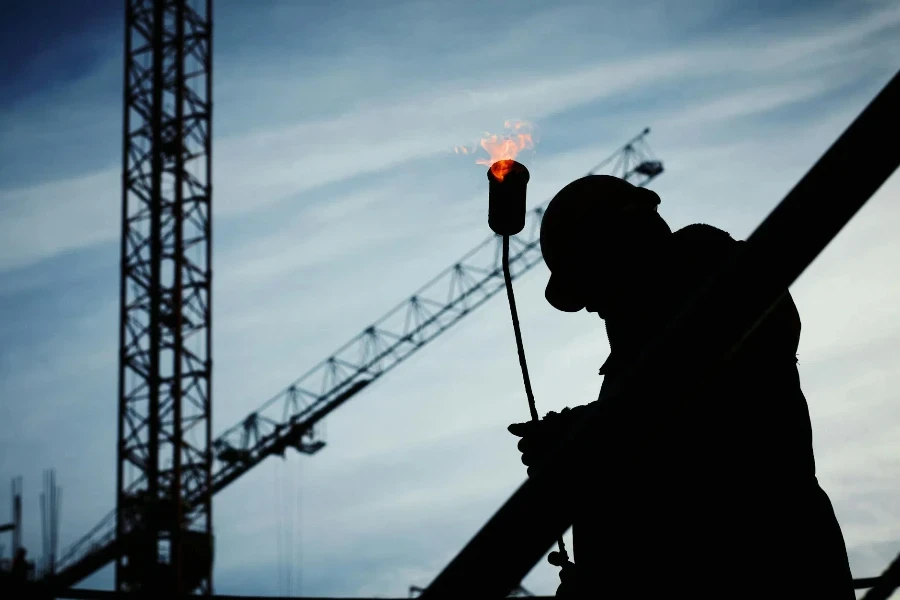
Plusieurs facteurs influencent le marché des portiques, notamment les principaux critères de performance et la dynamique des parts de marché. Les principaux moteurs de la croissance du marché comprennent l'expansion des infrastructures portuaires et des terminaux intermodaux et l'adoption croissante de technologies de manutention automatisée des matériaux. L'intégration des technologies IoT et IA dans les portiques a considérablement amélioré l'efficacité opérationnelle et la sécurité, réduisant les interventions manuelles et minimisant les erreurs.
Des facteurs économiques tels que la mondialisation et l'essor du commerce international ont également stimulé le marché. L'expansion des ports maritimes et des terminaux à conteneurs dans le monde entier nécessite des portiques de pointe pour gérer un débit de fret accru. De plus, la demande d'opérations respectueuses de l'environnement a conduit au développement de portiques électriques et économes en énergie, qui deviennent de plus en plus populaires.
L’évolution du comportement des consommateurs et des préférences des canaux de distribution a également eu un impact sur le marché. La préférence pour les solutions automatisées et numérisées a accru la demande de grues à portique autonomes. Le besoin de maintenance prédictive et de surveillance en temps réel a favorisé l’adoption de solutions de grues intelligentes. Les entreprises investissent dans la recherche et le développement pour créer des systèmes de grues adaptatifs capables de s’adapter à différents types et quantités de marchandises, améliorant ainsi la flexibilité et l’efficacité opérationnelles.
Les innovations récentes sur le marché incluent l'utilisation de matériaux légers et la construction modulaire dans la conception des portiques, ce qui a amélioré la mobilité et réduit le temps d'installation. Les étapes du cycle de vie des portiques ont également évolué, en mettant l'accent sur l'allongement de la durée de vie des équipements grâce à des technologies de maintenance avancées et à des matériaux de construction robustes. Le marché tend vers la numérisation des opérations de grue, avec des systèmes de contrôle avancés et des fonctionnalités automatisées devenant des exigences standard.
Facteurs clés lors de la sélection des grues à portique
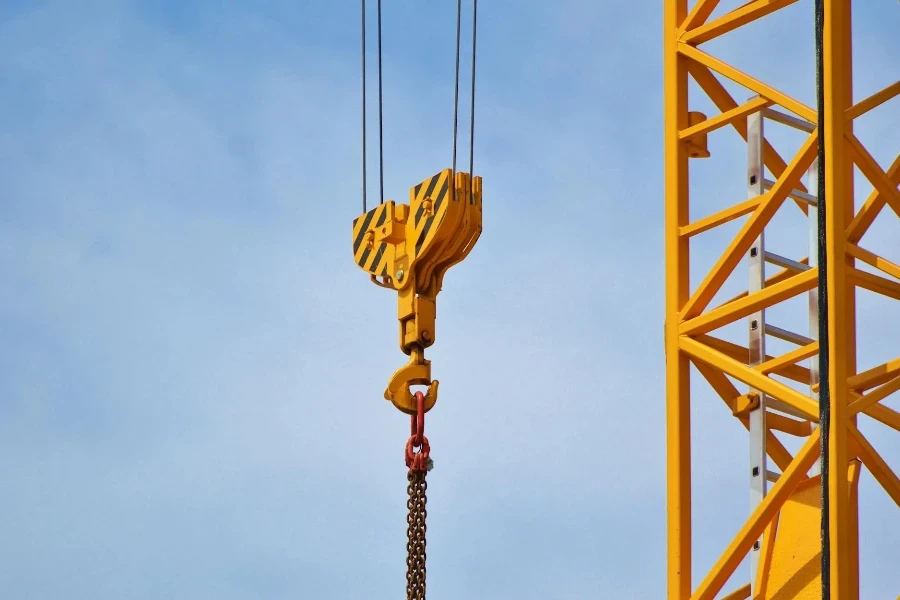
Choisir le portique adapté à vos opérations nécessite de comprendre divers aspects techniques et fonctionnels. Cette section décrit les facteurs clés que les entreprises doivent prendre en compte pour sélectionner le portique le plus adapté.
Capacité de charge
La capacité de charge est un facteur essentiel dans les performances d'une grue à portique. Elle fait référence au poids maximal que la grue peut soulever et transporter en toute sécurité. Évaluez avec précision les charges les plus lourdes que vous manipulerez pour éviter toute surcharge, qui peut entraîner une défaillance de l'équipement et des risques pour la sécurité. Les grues à portique sont dotées de capacités de charge allant de quelques tonnes à plusieurs centaines de tonnes, répondant à divers besoins industriels. Par exemple, une grue dans un chantier naval peut nécessiter une capacité de charge de 100 tonnes, tandis qu'une grue dans une usine de fabrication peut n'en nécessiter que 10 tonnes.
Longueur d'envergure
La portée, c'est-à-dire la distance entre les deux pieds de support, détermine la zone que la grue peut couvrir. Choisissez la portée en fonction de la taille de votre espace de travail et de la nature des tâches. Une portée plus longue permet une plus grande couverture, mais nécessite un support structurel plus robuste. Les portiques standard offrent des portées de 5 à 30 mètres, avec des conceptions personnalisées qui étendent cette plage. Équilibrez la portée avec la capacité de charge pour maintenir la stabilité et garantir des opérations sûres.
Hauteur de levage
La hauteur de levage correspond à la distance verticale maximale à laquelle la grue peut soulever une charge, ce qui est crucial dans les environnements où l'espace vertical est limité ou lorsqu'un empilage en hauteur est nécessaire. Les portiques offrent différentes hauteurs de levage, généralement de 3 mètres pour les petites grues d'atelier à plus de 30 mètres pour les grues industrielles lourdes. Sélectionnez la hauteur de levage en fonction de l'élément le plus haut à soulever et des obstacles potentiels dans l'espace de travail. Tenez compte de la hauteur libre pour garantir des opérations fluides et sûres.
Mobilité et flexibilité
La mobilité et la flexibilité sont importantes, en particulier pour les industries nécessitant des grues à différents endroits. Les grues à portique peuvent être fixes ou mobiles. Les grues à portique fixes offrent une stabilité et une capacité de charge élevées, mais sont ancrées à un emplacement spécifique. Les grues à portique mobiles, équipées de roues ou de chenilles, peuvent se déplacer dans l'espace de travail, ce qui est avantageux pour les chantiers de construction, les chantiers navals et les entrepôts. Choisissez entre fixe et mobile en fonction des besoins opérationnels et des exigences de flexibilité.
Qualité des matériaux et de la construction
Le matériau et la qualité de fabrication déterminent la durabilité, la sécurité et les besoins d'entretien d'une grue à portique. Des matériaux de haute qualité comme l'acier et les alliages d'aluminium sont couramment utilisés pour leur solidité et leur résistance à l'usure. Les composants structurels doivent résister aux contraintes opérationnelles et aux conditions environnementales. Des techniques de fabrication avancées et des processus de contrôle qualité garantissent que les grues répondent aux normes de l'industrie. Investir dans une qualité de fabrication supérieure peut conduire à une durée de vie plus longue, à une réduction des temps d'arrêt et à des coûts de maintenance inférieurs.
Progrès technologiques dans le domaine des grues à portique

L'industrie des portiques a connu des avancées technologiques importantes, améliorant l'efficacité, la sécurité et la facilité d'utilisation. Cette section explore les dernières fonctionnalités des portiques modernes.
Automatisation et contrôle à distance
Les technologies d'automatisation et de contrôle à distance ont révolutionné les opérations de levage des portiques. Les systèmes automatisés effectuent des tâches de levage répétitives avec une grande précision et cohérence, réduisant ainsi les interventions manuelles. Les fonctions de contrôle à distance permettent aux opérateurs de contrôler la grue à distance, améliorant ainsi la sécurité et l'efficacité. Ces technologies sont particulièrement utiles dans les environnements dangereux comme les usines chimiques et les chantiers de construction. Les systèmes de contrôle à distance avancés utilisent la communication sans fil et peuvent s'intégrer à d'autres systèmes d'automatisation industrielle pour des opérations transparentes.
Capteurs intelligents et intégration IoT
Les capteurs intelligents et l'intégration de l'Internet des objets (IoT) ont amélioré la surveillance et la maintenance des ponts roulants. Les capteurs fournissent des données en temps réel sur des paramètres tels que le poids de la charge, la température et l'intégrité structurelle. Ces données peuvent être analysées pour prévoir les problèmes et planifier la maintenance préventive, réduisant ainsi les pannes inattendues. Les ponts roulants compatibles IoT communiquent avec les systèmes de surveillance centraux, ce qui permet des diagnostics à distance et une optimisation des performances. Ces technologies améliorent la sécurité, l'efficacité et les économies de coûts.
L'efficacité énergétique
L'efficacité énergétique est une préoccupation croissante et les ponts roulants modernes sont conçus avec des moteurs et des systèmes d'entraînement économes en énergie pour réduire la consommation d'énergie sans compromettre les performances. Les systèmes de freinage régénératif récupèrent l'énergie pendant le freinage et la réinjectent dans le système d'alimentation, améliorant ainsi l'efficacité. L'utilisation de matériaux légers et de conceptions structurelles optimisées réduit l'énergie globale requise pour les opérations de grue. Les ponts roulants économes en énergie réduisent les coûts d'exploitation et contribuent à la durabilité environnementale.
Normes de sécurité et certifications

Le respect des normes de sécurité et l'obtention des certifications appropriées sont essentiels pour une exploitation sûre et légale des ponts roulants. Cette section traite de l'importance des normes de sécurité et des certifications nécessaires.
Conformité Réglementaire
Les grues à portique doivent être conformes aux réglementations de sécurité locales et internationales pour garantir un fonctionnement sûr. Aux États-Unis, l'Occupational Safety and Health Administration (OSHA) établit des normes de sécurité pour les opérations de grue. Le respect des normes OSHA est obligatoire pour toutes les grues à portique industrielles. De plus, l'American Society of Mechanical Engineers (ASME) fournit des directives pour la conception, la construction et le fonctionnement des grues. Le respect de ces réglementations permet de prévenir les accidents et d'assurer la sécurité des travailleurs et des équipements.
Certifications industrielles
Les certifications industrielles indiquent la qualité et la sécurité des ponts roulants. Des certifications telles que la norme ISO 9001 montrent que le fabricant suit des pratiques rigoureuses de gestion de la qualité. Les ponts roulants répondant aux exigences de la Commission électrotechnique internationale (CEI) et du Comité européen de normalisation (CEN) sont certifiés pour la sécurité électrique et mécanique. L'obtention de ces certifications démontre l'engagement du fabricant en matière de qualité et de sécurité, offrant ainsi une assurance aux acheteurs.
Inspections et entretien réguliers
Des inspections et des entretiens réguliers sont essentiels pour assurer le bon fonctionnement des grues à portique. Les normes de sécurité exigent des inspections périodiques pour identifier et résoudre les problèmes potentiels avant qu'ils ne provoquent des accidents. Les activités d'entretien comprennent la vérification de l'intégrité structurelle, la lubrification des pièces mobiles et le test des mécanismes de sécurité. Un programme d'entretien complet peut prolonger la durée de vie de la grue et réduire les interruptions de fonctionnement. Suivez les directives d'entretien du fabricant et conservez des enregistrements détaillés des inspections et des réparations.
Applications innovantes des grues à portique
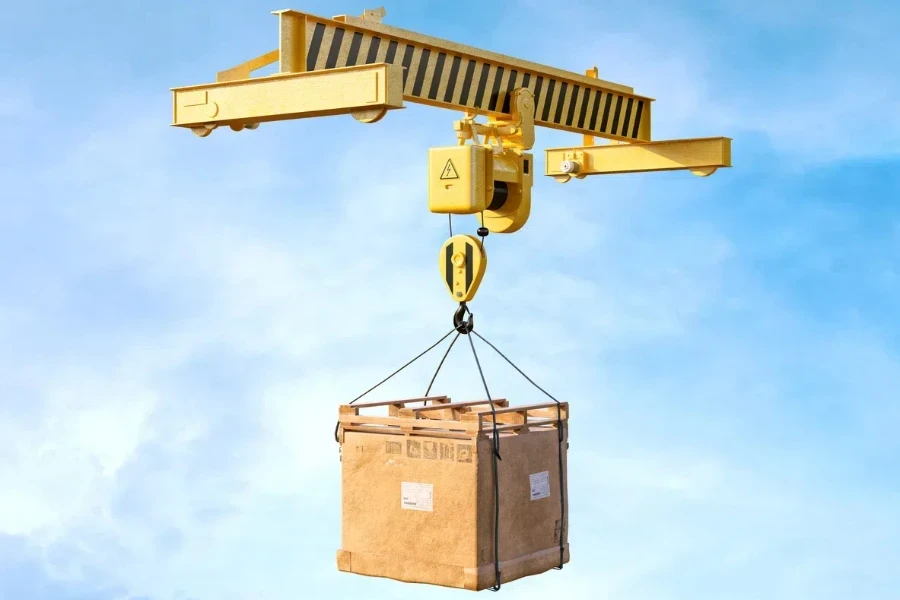
Les portiques sont des machines polyvalentes utilisées dans divers secteurs industriels pour soulever et transporter des charges lourdes. Cette section explore quelques applications innovantes dans différents secteurs.
Industrie de construction
Dans le secteur de la construction, les portiques lèvent et positionnent des matériaux lourds comme des poutres en acier, des blocs de béton et des éléments préfabriqués. Leur capacité à couvrir de grandes surfaces et à manipuler des charges importantes les rend idéales pour les chantiers de construction. Les portiques mobiles sont utiles pour déplacer des matériaux sur le chantier, tandis que les portiques fixes sont utilisés pour les tâches nécessitant une grande stabilité et une grande précision. L'utilisation de portiques dans le secteur de la construction améliore l'efficacité et réduit le travail manuel, augmentant ainsi la productivité.
Construction navale et industrie maritime
L'industrie de la construction navale et maritime s'appuie sur des portiques pour l'assemblage et la réparation des navires. Les grues à grande capacité de charge et à longue portée soulèvent et positionnent de gros composants de navires tels que des sections de coque, des moteurs et des hélices. Elles sont également utilisées pour charger et décharger des marchandises des navires, ce qui est essentiel pour les opérations portuaires. Des fonctionnalités telles que l'automatisation et la télécommande améliorent l'efficacité et la sécurité dans ce secteur.
Fabrication et entreposage
Dans les secteurs de la fabrication et de l'entreposage, les portiques assurent la logistique des matériaux. Ils soulèvent et transportent des machines lourdes, des matières premières et des produits finis. Les grues dotées de capacités de positionnement précises sont utilisées dans les chaînes de montage pour déplacer les composants entre les postes de travail. Dans les entrepôts, les portiques mobiles facilitent le déplacement des marchandises, améliorant la gestion des stocks et réduisant les temps de manutention. Les capteurs intelligents et les technologies IoT améliorent la fonctionnalité et rationalisent les opérations.
Réflexions finales
Pour choisir le portique adapté à vos besoins opérationnels, il est important de comprendre vos besoins opérationnels spécifiques et de prendre en compte divers facteurs techniques et fonctionnels. Concentrez-vous sur la capacité de charge, la longueur de la portée, la hauteur de levage, la mobilité et la qualité de fabrication pour choisir un portique qui répond à vos exigences et améliore l'efficacité. Rester à jour avec les avancées technologiques et adhérer aux normes de sécurité garantit l'utilisation sûre et efficace des portiques dans diverses applications industrielles.
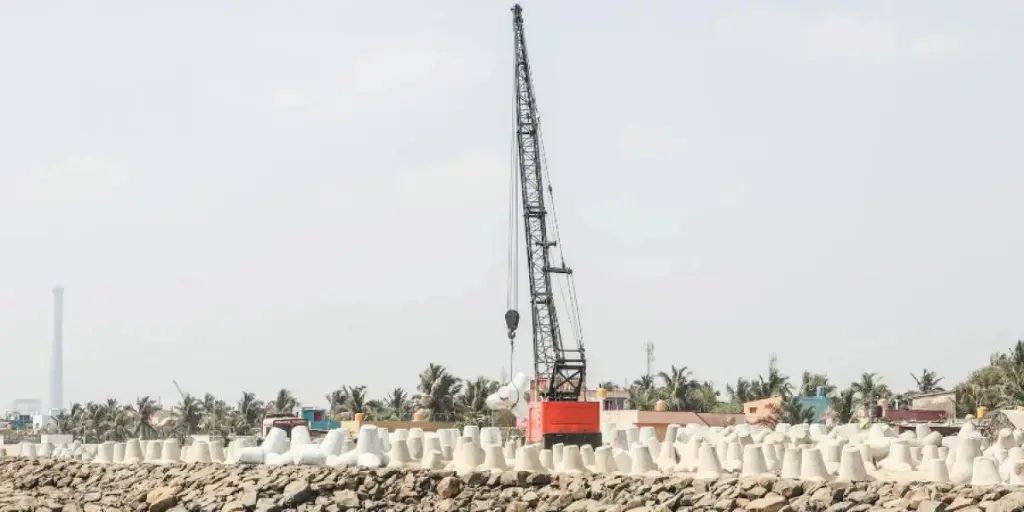




 বাংলা
বাংলা Nederlands
Nederlands English
English Français
Français Deutsch
Deutsch हिन्दी
हिन्दी Bahasa Indonesia
Bahasa Indonesia Italiano
Italiano 日本語
日本語 한국어
한국어 Bahasa Melayu
Bahasa Melayu മലയാളം
മലയാളം پښتو
پښتو فارسی
فارسی Polski
Polski Português
Português Русский
Русский Español
Español Kiswahili
Kiswahili ไทย
ไทย Türkçe
Türkçe اردو
اردو Tiếng Việt
Tiếng Việt isiXhosa
isiXhosa Zulu
Zulu